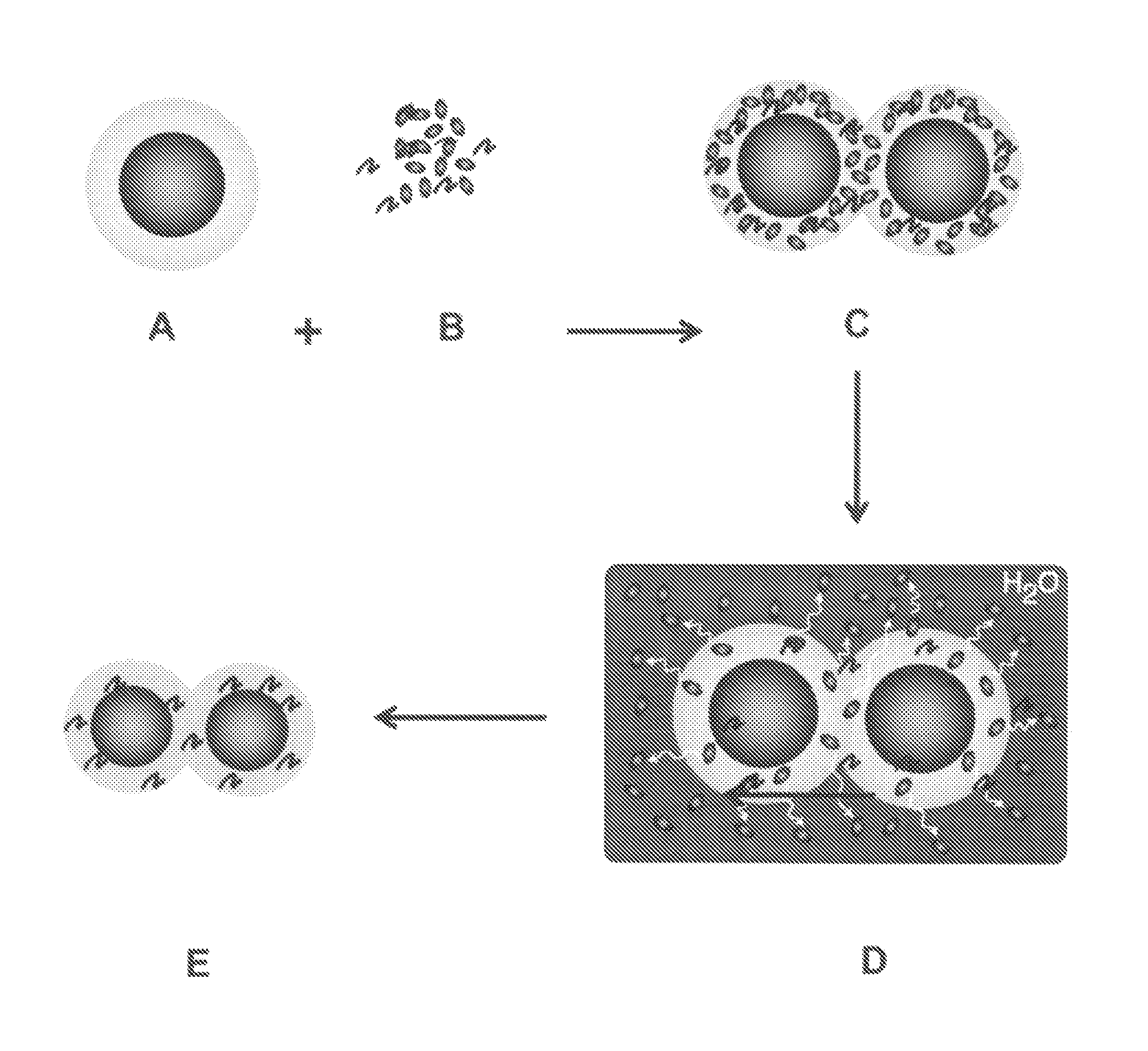Bone graft and biocomposite for prosthetic dentistry
a biocomposite and bone graft technology, applied in the field of bone grafts and biocomposites for prosthetic dentistry, can solve the problems of affecting the long-term stability of implants, and the method of administration and composition are clearly not suitable for prosthetic dentistry
- Summary
- Abstract
- Description
- Claims
- Application Information
AI Technical Summary
Benefits of technology
Problems solved by technology
Method used
Image
Examples
example 1
Preparation of an Angiogenic Mixture with Osteoinductive Human rBSP
[0062]The underglycosylated human rBSP was isolated according to the method described by Wuttke et al. (Wuttke et al, 2001, Structural characterization of human recombinant and bone-derived bone sialoprotein. J Biol Chem 276:36839-36848). In brief, the complete cDNA for human BSP (without signal peptide) was amplified by means of PCR and cloned in the episomal eucaryotic expression vector pCEP-Pu (Kohfeldt E et al., Properties of the extracellular calcium binding module of the proteoglycan testican, in FEBS Lets. 1997, 414(3) 557-61). The expression constructs were introduced by means of liposome mediated stable transfection into the embryonic kidney cell line EBNA-293 or human breast cancer cells MCF-7. Transient cells were cultivated, 48 hours after transfection for two days in serum-free medium so that the proteins in the FCS could not react with the expressed rBSP and interfere with the purification of the recomb...
example 2
Preparation of a Moldable Bone Graft and Biocomposite with Osteo-Conductive Properties
[0065]As bone graft and osteoconductive material, there was used a commerical Easy Graft™“spaceholder” material of DS DENTAL Degradable Solutions AG (Schlieren-Zürich, Wagistrasse, Switzerland). The biocomposite comprised granules of pure tricalciumphosphate (TCP) in the beta-crystal phase. The TCP-material had been compacted to granules and in the present example there was used the fraction wherein the granula had diameters from 500 μm to 630 μm, a micro-porosity of greater than 50 percent and an average pore size of about 5 μm. For facilitating placement the granules of the commercial Easy Graft™ spaceholder material are further coated with a 10 μm layer of biodegradable PLGA polymer so that the hard granula material can be made moldable for placement by the addition of a defined amount of plasticizer.
example 3
Preparation of a Biocomposite and Spaceholder Having Osteoinductive, Osteoconductive and Angiogenic Properties
[0066]The biocomposite of the invention was prepared by immersing and impregnating PLGA-coated granules of beta-TCP (Easy Graft™“spaceholder” material of DS DENTAL Degradable Solutions AG, Schlieren-Zürich, Wagistrasse, Switzerland) with a basic organic plasticizer solution comprising N-methyl-2-pyrrolidone (NMP) and 50 μg / mL human rBSP for a period of 5 seconds to 1 minute with gentle agitation so that the hardened granular TCP-material becomes flowable and liquid clathrates are obtained of a multidentate human rBSP-NMP complex salt which is embedded within the biodegradable PLGA-coating. As the biodegradable PLGA is located at the surface of the compacted TCP material, within the TCP channels and pores and further within inter-granular gaps and crevices, the clathrates of human rBSP NMP complex salt was thereby also enshrined within the granular beta-TCP material. Conseque...
PUM
| Property | Measurement | Unit |
|---|---|---|
| diameters | aaaaa | aaaaa |
| diameters | aaaaa | aaaaa |
| Young's Modulus | aaaaa | aaaaa |
Abstract
Description
Claims
Application Information
 Login to View More
Login to View More - R&D
- Intellectual Property
- Life Sciences
- Materials
- Tech Scout
- Unparalleled Data Quality
- Higher Quality Content
- 60% Fewer Hallucinations
Browse by: Latest US Patents, China's latest patents, Technical Efficacy Thesaurus, Application Domain, Technology Topic, Popular Technical Reports.
© 2025 PatSnap. All rights reserved.Legal|Privacy policy|Modern Slavery Act Transparency Statement|Sitemap|About US| Contact US: help@patsnap.com



